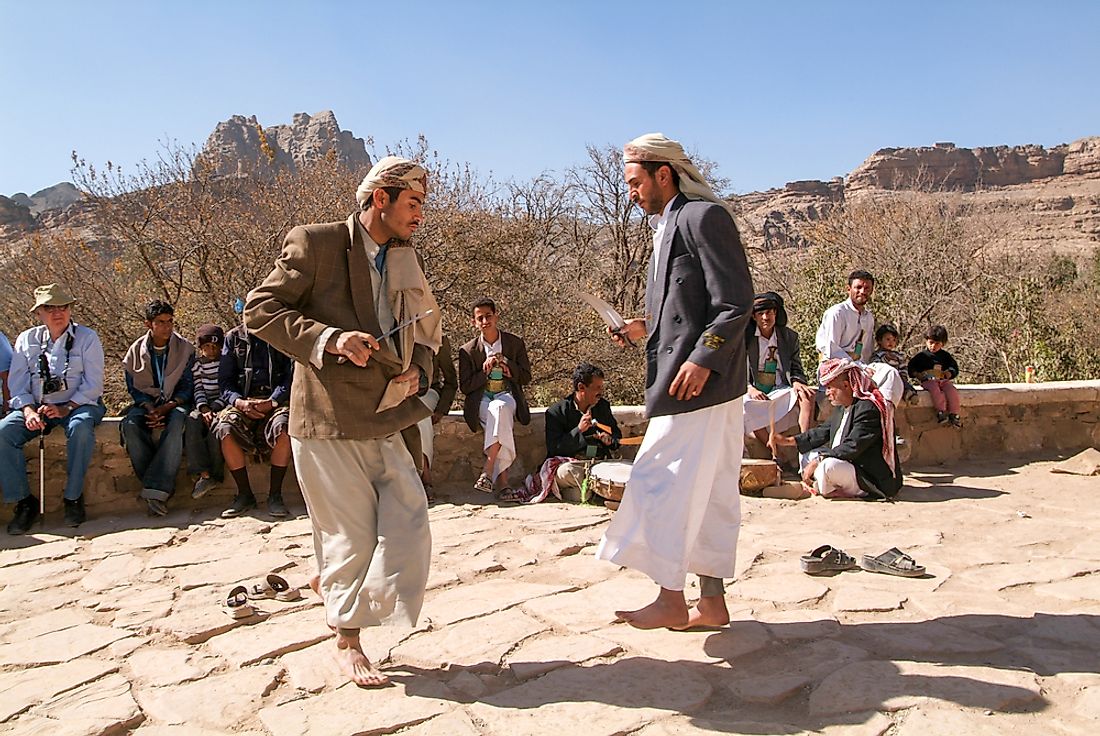What Is The Ethnic Composition Of Yemen?

Yemen is an Asian state at the southernmost end of the Arabian Peninsula. It is the second-biggest Arab nation in the Arabian Peninsula which occupies an area of about 203,850 sq miles. Yemen is surrounded by Oman, the Arabian Sea, Guardafui Channel, the Gulf of Aden, the Red Sea, and Saudi Arabia.
Yemen has a population of about 28,667,230 people including the 1,937,451 Yemenis living in Sana’a. Over 2.7% of the residents of Yemen are above the age of 65, and 46% are below 15 years old. The largest ethnic group in Yemen is the Arabs, followed by the Europeans, South Asians, and Afro-Arabs. Most minority communities left the region after the South and North Yemen were established.
Ethnic Groups in Yemen
Yemen is a tribal state with the northern parts of the country being home to over 400 Zaidi tribes. There are numerous hereditary-caste groups in Yemen’s urban center like Al-Akhdam. A considerable percentage of Yemenis are of Persian origin. There are over 100,000 Yemenis of Indian origin residing in the southern parts of Yemen around Hodeidah, Mokha, Lahaj, Shihr, Mukalla, and Aden. Some of the prominent Singaporeans, Malaysians, and Indonesians of Arab descent are the Hadhrami community that originated from Hadramawt, Yemen. The Hadramis people migrated to the Indian Subcontinent, East Africa, and Southeast Asia. Currently, there are over 10,000 Hadramis people living in Singapore.
Maqils
The Maqils are the Arabian nomadic group that migrated to the Maghreb together with the Banu Sulaym and Banu Hillal tribes during the eleventh century. The Maqils are of Yemeni origin, and they migrated to the west through Egypt and southwards to Mauritania. The Maqils can also be found in Algeria and Morocco among other North African states. Yemen hosted over 124,600 Asylum seekers and refugees in 2007. Some of the asylum seekers and refugees living in Yemen were from Syria, Ethiopia (2,000), Iraq (11,000), and Somalia (110,600). Over 334,000 Yemenis have been displaced internally by various political conflicts. A considerable percentage of the Yemeni Diaspora can be found in Saudi Arabia (over 800,000) and the U.K. (over 70,000).
Yemenite Jews
The Yemenite Jews, also known as Teimanim, are the Jews who reside in Yemen. The phrase "Yemenite Jews" can be used to refer to all the descendants of the Yemen Jewish community. A considerable percentage of the Teimanims were transported to Israel during the Operation-Magic Carpet that began on June 1949. After numerous Jews were persecuted in Yemen, the Yemen Jews migrated to Israel and the U.S. among other countries. Currently, there is a small number of Yemen Jews still living in the country.
Afro-Arabs
The Afro-Arabs are Arabs of African-descent, and this includes the black community within the Egyptians, Mauritanians, North Sudanese, and the Berbers. The Arabs had already established some commercial settlements along the Swahili coast by the tenth century CE. These trading centers were captured by the Portuguese after they found the Cape Road. The Sultanate-of-Muscat recaptured some of these market towns, particularly the ones on Zanzibar and Pemba islands. The Oman Arabs who lived in these settlements mingled with the locals, thereby establishing the Afro-Arabs.
Languages
The official language of Yemen is Modern Standard Arabic. Yemeni Arabic is a common vernacular in the country. Numerous non-Arabic languages are used in Socotra Island and the Al Mahrah Governorate. The deaf communities use the Yemeni Sign Language. One of the largest South Sematic languages spoken in Yemen with over 70,000 people is Mehri. Another South Sematic language used in Socotra Island is Soqotri. There were over 57,000 Soqotri speakers in Yemen in 1990. The most important foreign language taught mostly in Southern parts of Yemen is English. A small Cham-speaking community can be found in Sana’a.
Religion
Religion in the country is made up of two main Islamic groups (the Shia and Sunni Muslims). Over 45% of the Muslim population is Shia, while 53% are Sunni Muslims. Over 99.1% of the Yemenis are Muslims. Most Zaidi tribes are Shia Muslims. Some minority groups which make up the Shia Muslims in Yemen include the Ismaili and Twelver Shias. The Sunni Muslims in Yemen adhere to the Shafi’s school of thoughts. A significant number of Sunni Muslims in Yemen are followers of the Hanbali and Maliki schools. The Shafi’is are found in the southeast and south while the Zaidi tribes are in the northwest and north. Yemen is home to over 400 Jews and 3,000 Christians.











